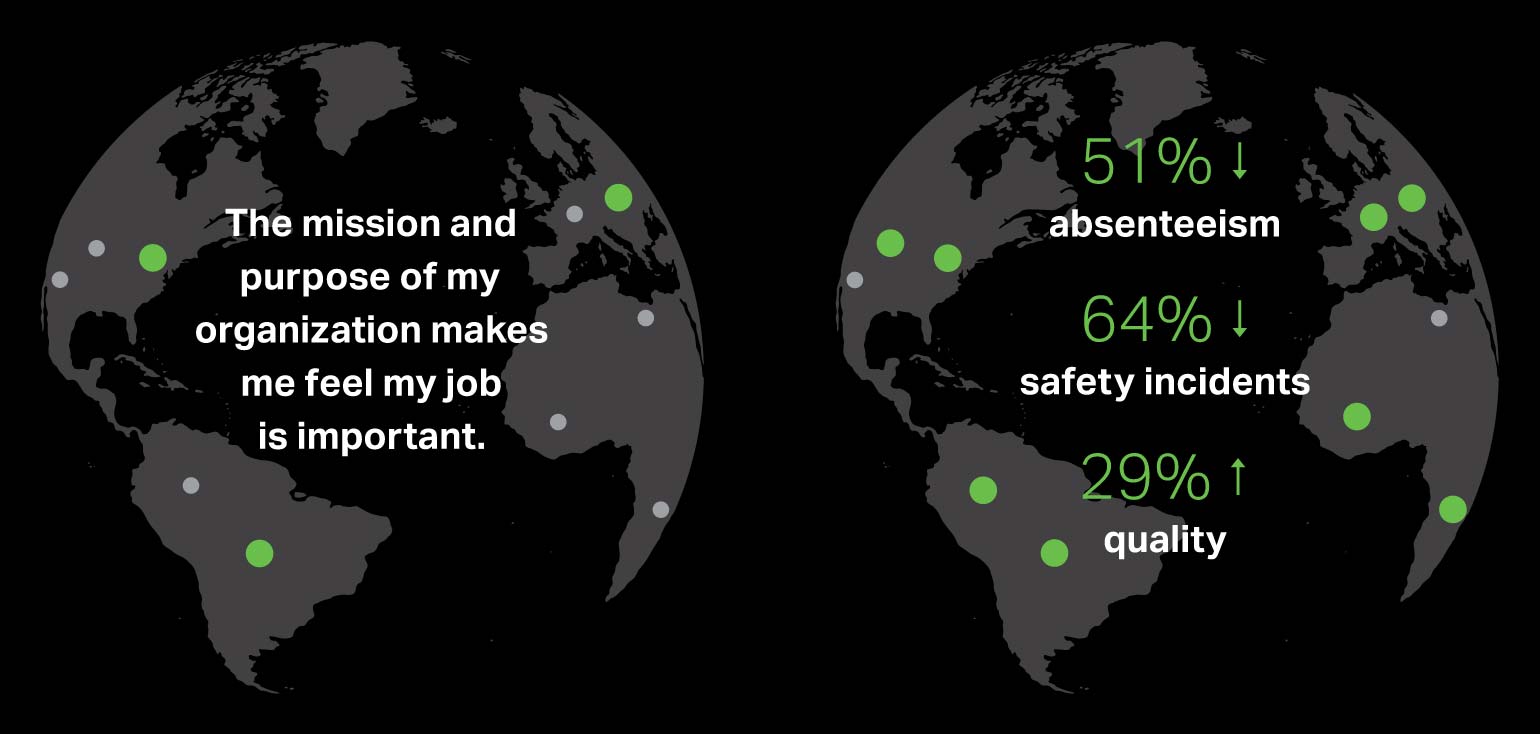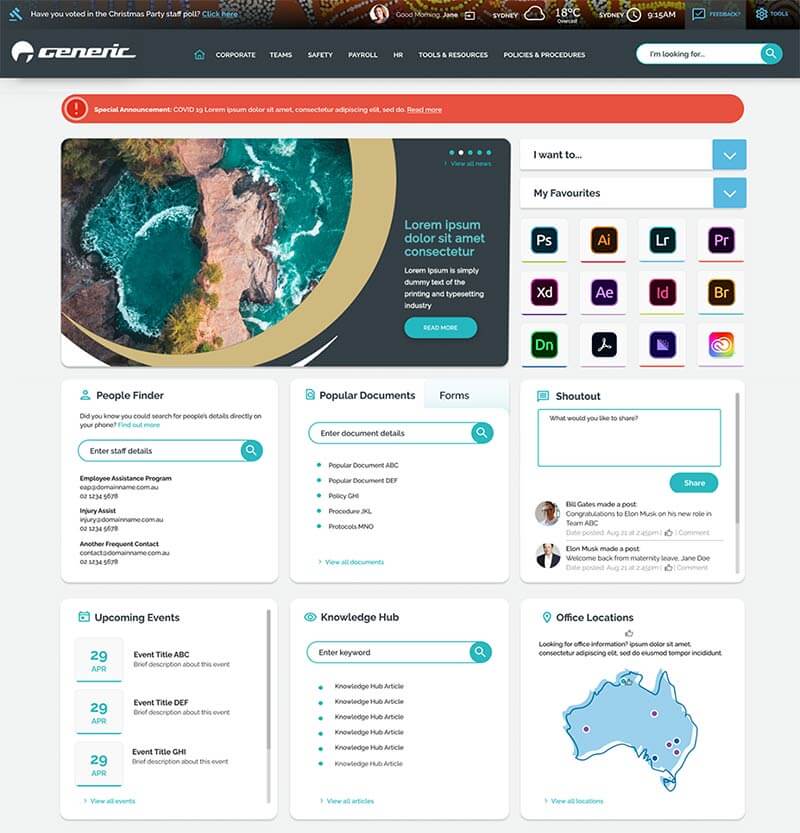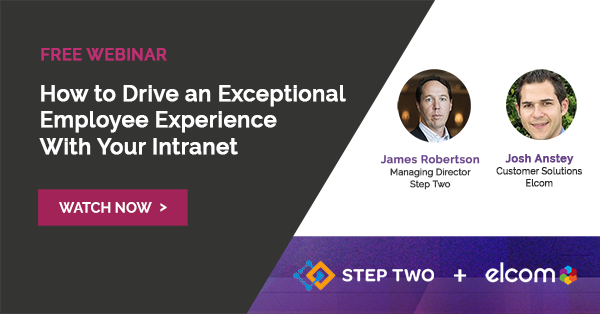The employee experience has a profound impact on productivity, retention, and overall success.
In an era marked by rapid technological advancements and evolving workforce expectations, delivering a stellar employee experience is more than a 'nice-to-have'.
It's a critical differentiator that impacts talent retention, productivity, and overall business success. When done right, a positive employee experience transcends beyond just job satisfaction, fostering a sense of purpose and alignment with organisational values.
So, how can organisations ensure they're ticking all the right boxes? Let's unpack why employee experience matters, the benefits of employee experience, and the pivotal role of employee experience solutions and why your business should invest in them right now.
What is Employee Experience?
Employee experience (EX), goes beyond the superficial elements of the workplace. It encompasses every touchpoint an employee has with their organisation, from their initial onboarding process to their day-to-day tasks, interactions, feedback loops, and even their exit.
From their initial onboarding, the daily grind, right up to their farewell party, it's the holistic sum of their many interactions.
A positive employee experience delves deeper than the surface level of simple job satisfaction. It's about empowerment, engagement, and creating an environment where employees feel aligned with the company's goals.
It's a holistic approach to understanding an employee's journey, sentiment, and overall relationship with their workplace.
For any organisation – big or small – the why is employee experience important question should be at the forefront of their strategy. And there's no better answer than understanding the tangible and intangible benefits it brings.
Benefits of Investing in Employee Experience
We've already touched on some of the benefits of employee experience, let's take a deeper dive.
Increased Productivity
An engaged and fulfilled employee is not just a happier individual but also a more productive asset to the company. Studies repeatedly highlight a direct correlation between a positive employee experience and spikes in productivity levels. In particular, delivering great frontline employee experiences with the right tools, such as an efficient intranet system, enable employees to quickly access information, collaborate on projects, and share knowledge, reducing time wastage and fostering an environment where tasks are accomplished swiftly and effectively.
A positive employee experience often translates into streamlined workflows. For instance, when using platforms like Elcom’s intranet solutions, employees can effortlessly share documents, communicate about updates, and track project milestones. This direct and instantaneous exchange of information removes redundant processes and ensures tasks are accomplished more efficiently.
Improved Customer Satisfaction
It's simple: happy employees make happy customers. When an organisation prioritises why employee experience matters, it resonates in every interaction the staff has with its clientele.
Think of the last time you interacted with a disgruntled customer service representative. The experience was far from pleasant, wasn’t it? Conversely, when employees are fulfilled and motivated, this positivity rubs off on their interactions with customers. They become proactive problem solvers, empathetic listeners, and genuine brand ambassadors.
Customers can sense the difference. They're more likely to return, recommend your services, or even pay a premium when they’ve been served by a content, motivated staff member. Over time, these positive interactions bolster your brand's image and trustworthiness in the market.
Reduced Turnover
One of the significant benefits of employee experience is its ability to anchor employees to the organisation.
The importance of retaining seasoned, skilled employees cannot be stressed enough. Every time an experienced employee leaves, they take a piece of the company's institutional knowledge with them. And the cost? It's not just financial; there's a tangible dip in team morale and a potential disruption in workflow.
According to Gallup, business units that prioritised the employee experience achieved a 51% reduction in absenteeism, a 64% drop in safety incidents and a 29% improvement in quality.

When employees feel that their needs, aspirations, and well-being are being prioritised, they are less likely to look for opportunities outside. Promoting employee experience acts as a tether, binding employees to the company's vision and culture. This bond, nurtured through platforms like intranets that facilitate communication, collaboration, and recognition, reduces the wanderlust that might otherwise have employees peeping over the proverbial fence for other opportunities.
Attract Top Talent
The current generation of top talent is discerning. They're not swayed by just a hefty paycheck; they want to be part of organisations that align with their values.
They are keen on joining organisations that showcase a commitment to providing a positive employee experience.
By investing in and promoting employee experience, businesses send out a strong message to potential recruits about their values and priorities.
How to Improve Employee Experience
Research consistently shows a direct link between employee experience and metrics such as productivity, innovation, and staff retention. But what tangible steps can organisations take to deliver great employee experiences? Also, how do you measure employee experience? Let’s delve into some effective strategies.
1. Cultivating a Positive Work Culture
Culture isn't just about the perks or office layouts; it's about creating an environment where employees feel recognised, respected, and valued. This positive sentiment often translates to enhanced collaboration, increased loyalty, and a collective drive towards success. A study by Gallup revealed that employees who identify with their workplace culture are more likely to feel engaged, loyal, and satisfied.
Tip: Encourage open communication. Regular team check-ins, transparent feedback loops, and celebrating small wins can foster a sense of community and purpose.
2. Making Work Meaningful
A report by BetterUp emphasised the importance of meaningful work. Employees who see purpose in their roles are 1.4 times more engaged and have 1.7 times higher job satisfaction.
Every team member, irrespective of their role, wants to feel that their work matters. This connection to the bigger picture not only boosts morale but also drives individuals to put in their best effort.
Tip: Regularly communicate organisational goals and highlight how individual contributions fit into this broader narrative. This helps instil a sense of purpose and ownership.
3. Competitive Compensation and Benefits
While monetary compensation is essential, the modern employee seeks more holistic benefits. This could be in the form of health and wellness initiatives, flexible work arrangements, or continued learning opportunities. According to a Glassdoor survey, 45% of employees cited salary as the top reason for changing jobs. But beyond the paycheck, holistic benefits also matter.
Tip: Periodically review and revise your compensation and benefits packages. Ensure they align with market standards, and more importantly, with the evolving needs and preferences of your workforce.
4. Investing in Employee Development
In a rapidly changing world, learning and growth opportunities are non-negotiables. By investing in employee development, organisations not only upskill their teams but also demonstrate a genuine interest in their long-term growth. LinkedIn's Workforce Learning Report showcased that 94% of employees would stay longer at a company if it invested in their learning and development.
Tip: Incorporate a blend of learning methods - from workshops, e-courses, and mentorship programmes. This caters to diverse learning preferences and ensures everyone has access to growth opportunities. Also, consider optimising the onboarding process with an intranet to ensure employees can more quickly achieve high productivity levels.
5. Championing Work-Life Balance
Work-life balance isn't just a buzzword. It's a critical component of the modern work ethos. Encouraging a balance ensures employees remain motivated, reduces burnout, and fosters a healthier work environment. A study from FlexJobs highlights that 80% of workers would be more loyal to their employers if they had flexible work options.
Tip: Be open to flexible work arrangements. Whether it’s remote working days, staggered hours, or longer breaks, find what aligns with your organisational structure and the well-being of your staff.
Employee Experience Solutions
How can you improve employee experience using technology? Let's unpack the pivotal role of employee experience solutions and why your business should invest in them right now.
1. Communication Tools
Transparent and effective communication is the linchpin of a cohesive work environment. Tools like instant messaging, video conferencing, and team chat platforms break down geographical barriers, ensuring every voice is heard and organisations deliver a great employee experience (even in a crisis).
At its core, effective communication is the lifeline of any thriving organisation. But it’s time we moved past the basics. Here's how the modern communication toolkit has evolved:
- Instant Messaging & Video Conferencing: While these remain fundamental, the expectation now is for features that enhance the quality of communication, such as AI-driven background noise reduction or real-time subtitles during video calls.
- Community Spaces: Imagine a digital lounge, a space where employees can gather, not for formal meetings, but for casual interactions, sharing ideas or simply catching up. These spaces foster a sense of belonging, essential in a remote-working era.
- Social Updates: Much like our favourite social media platforms, integrating a space for business-centric updates can be a game-changer. Sharing achievements, company news, or even celebrating birthdays can be made special with the right tools.
2. Collaborative Tools
Collaboration is more than just working together. It's about brainstorming, sharing ideas, and co-creating value. Platforms that facilitate document sharing, real-time editing, and feedback loops can invigorate team dynamics.
- Document Sharing & Real-time Editing: This remains fundamental, allowing teams to co-create, make edits, and give feedback simultaneously.
- Team Workspaces: Think of this as your team's digital headquarters, much like what Elcom offers. Here, every essential resource, from project timelines to brainstorming boards, resides. It's not just about working together; it’s about working smarter.
3. Workflow Automation
Save time, reduce errors, and enhance productivity. Automating mundane tasks ensures employees can focus on what truly matters – their core responsibilities and value-driven projects.
- Automating Tasks: Whether it’s data entry, report generation, or even sorting emails, automation reduces manual intervention, increasing accuracy and productivity.
- Forms and Workflows: The beauty of modern tools is in their customisation. Need a form for leave applications? Or perhaps a workflow for project approvals? The ability to design, customise, and implement forms and workflows digitally not only speeds up processes but also ensures consistency.
4. Learning Management Systems
The modern employee doesn't just work—they aspire to grow. With a robust Learning Management System (LMS), businesses can offer a plethora of growth opportunities, ranging from skill-based training to leadership programs.
- Adaptable Learning Paths: Modern LMSs offer personalised learning pathways. Whether an employee is looking to refine their current skill set or explore new horizons, an adaptable LMS can cater to varied learning needs.
- Microlearning Opportunities: Bite-sized, topic-specific modules are becoming increasingly popular. They allow employees to learn in short bursts, making the process more manageable and less overwhelming.
- Analytics & Insights: Advanced LMSs provide data-driven insights, helping organisations understand areas of strength, courses that are popular, and modules that may need improvement.
- Interactive Elements: Modern LMS platforms often incorporate gamified elements, quizzes, and interactive modules to enhance engagement and improve knowledge retention.
5. Intranets
Did you know you can onboard employees with an intranet?
An intranet plays a pivotal role if you're wondering how to improve employee experience, offering a platform that streamlines communication, facilitates knowledge sharing, fosters collaboration, unifies the organisation and simplifies tasks.

It is often referred to as the foundation of the digital workplace and offers many of the functionality in communication, collaboration, workflow and learning systems in the one platform.
You’ll find that employees go to an intranet to get tasks done, from filling in forms to finding organisational knowledge and documents, collaborate and socialise with colleagues through social tools, discover the latest company news that is relevant to them, and to use as a launchpad to access all other employee systems they need to.
Intranets can also integrate with other systems offering single sign-on to third party systems, as well as pulling in data from those systems.
- Unified Communication Hub: Today's intranets facilitate diverse communication modes, from announcements and newsletters to forums and chat systems, ensuring that every team member stays in the loop.
- Resource Repositories: Be it company policies, templates, or essential guides, intranets act as a centralised hub where employees can access crucial resources with ease.
- Collaboration Spaces: Intranets have evolved to incorporate collaboration tools, allowing teams to co-create, share feedback, and work on projects seamlessly.
- Integration Capabilities: Modern intranets can integrate with a range of external tools and platforms, ensuring that employees have a holistic workspace without constantly hopping between different applications.
Conclusion
With the changing dynamics of the workplace, it's vital that businesses recognise the indispensable role that good employee experience management plays. It's no longer 'why is employee experience important', but 'how you can leverage employee experience'. By investing in platforms like Elcom’s intranet solutions that foster communication, collaboration, and a sense of community, organisations are well poised to reap the myriad benefits of a committed and content workforce.
The significance of the employee experience in today's competitive business environment cannot be understated. It's the driving force behind employee engagement, productivity, and loyalty. And at the heart of this experience is a robust, user-friendly intranet system.
If you're keen to elevate your business and ensure that your employees are not just working but thriving, it's time to consider how an intranet can revolutionise your organisation’s internal landscape.
Have a lunch break to spare? This inspiring and practical webinar recording will help teams plan a way forward, showing how intranets can be at the heart of exceptional employee experiences.
